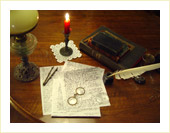Instructions for typesetting a poster
This is a Beginner's Guide to A0 poster typesetting in LaTeX. The presented advice is only indicative, no formal style is imposed. However, we recommend A0 formats in "portrait" orientation.
Downloads
Preliminaries: The suggested tool is LaTeX. If you want to typeset your poster with another tool, you should be careful with the image resolutions and the size of the resulting PDF file (it should be kept under 20MB).
Image resolution should be not too coarse (the image appears blurred or pixelized on the A0 format) and not too fine (to generate large PDF files for printing). Caution should be taken with genuine vector-images like Encapsulated PostScript (.eps) or PDF files. Their size might be unnecessarily large as it might contain also hidden data (3D information in Z-buffer, or other images).
Preparing posters in LaTeX: For the A0 poster creation, we will use the a0size and the sciposter LaTeX classes. These classes are probably already installed on your computer. However, they are also provided with the poster template (see the download section), in this case you have to copy them into your current LaTeX source directory. Other LaTeX resources are available at CTAN. So, all you need is a working LaTeX installation.
All you need to do is now
- downlad the template
- complete the LaTeX source file poster.tex
- compile it with pdflatex, or latex
The only file you have to modify is the file poster.tex. If you compile it with pdflatex, you will be able to include bitmap figures (PNG, BMP and JPG) and PDF files by using the class graphicx: \usepackage{graphicx} at the beginning of the document and e.g. \includegraphics[width=10.5cm]{./figure.png} in the document body. For this option, it is not possible to include EPS or PS figures.
If you compile poster.tex with latex, you will be able to include only EPS and PS figures using the same class graphicx. (The template poster.tex already contains an image, see how it is included).
We suggest to use pdflatex to compile your poster, as it produces nice looking posters that can be easily printed on plotters.
Images and image resolution: A 150 dpi resolution is a good tradeoff between image size (KB) and image quality. A good rule of thumb is to have a picture which is twice as big as the final result you want to have. For example if you want to have a 10 by 10 centimeters bitmap figure on your poster, you should have on your screen a 20 by 20 centimeters.
Previewing your poster: You can preview your poster with any PDF reader. For printing a test copy on A4 paper, define the paper-size to A4 and then use the "fit to page" command in your PDF viewer.
